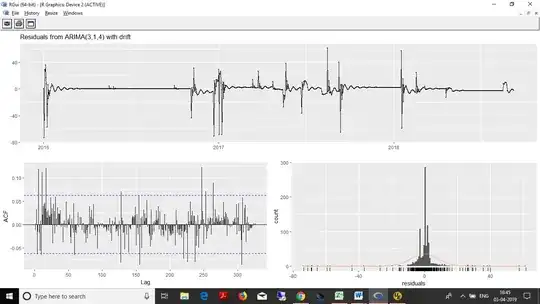We need to forecast the daily web page views data. Data consists of a csv file starting with 1st January 2016 and ends with 7th February 2019. Total no. of daily records is 1090.
Following step by step approach was followed for forecasting:
- Convert the daily record into a time series with frequency of 365.25
- Clean time series for any outliers
- Split the time series data into train set (first 90%) and test set (rest 10%)
- Fit auto.ARIMA model on train data
- Check the residuals. Given below is the residual graphs on fitted data
- Here is the result of Ljung-Box test
data: Residuals from ARIMA(3,1,4) with drift Q* = 665.58, df = 722, p-value = 0.9342
Model df: 8. Total lags used: 730
From the p-value (> 0.05) and residual graphs it seems that there is no white noise in residual. Is it good enough fit to forecast the future.
